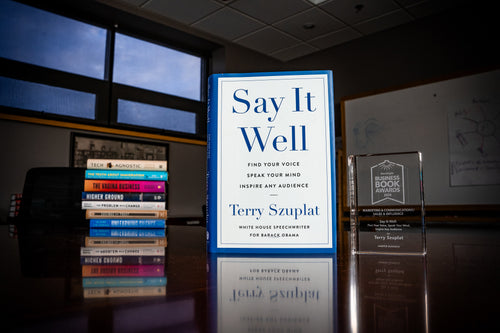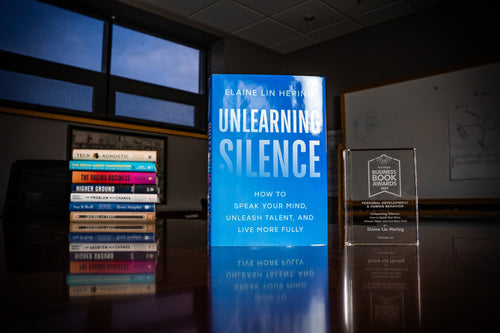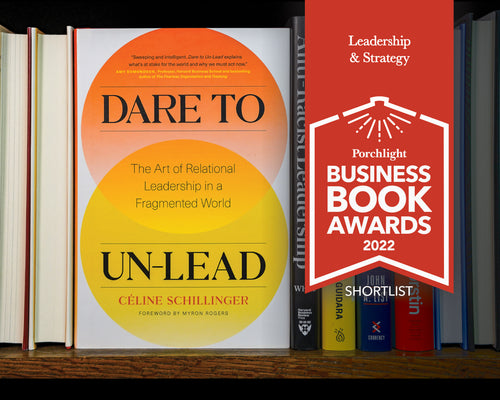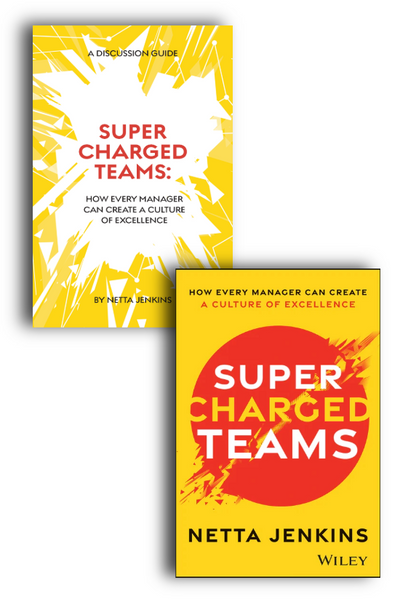The Best Innovation & Creativity Books of 2024
Even books that celebrate uniqueness can start to look the same when you read too many of them.
Last year, I read one-too-many observations on how Steve Jobs’s perfectionism led to his success, and this year I encountered quite a few echoing reports of Dick Fosbury’s unique-turned-standard high jump technique. I don’t share this observation to imply that the best books about innovation and creativity must include one-of-a-kind subjects, but rather to point out how hard it is to write a book that stands out–especially when it’s a book about standing out.
This year’s best innovation and creativity books look beyond Steve Jobs and Dick Fosbury to highlight how creativity is a skill we all have, and it is an approach we can take to make the world a better place for all. These books explore the many benefits of embracing creatives and creativity in corporate environments (Born to Create by Anne Jacoby), share a hopeful look at what happens when tech takes a human-first approach globally (From Pessimism to Promise by Payal Arora), empower readers to see, think, and act in new ways (Look Again by Tali Sharot and Cass R. Sunstein), analyze what makes an entrepreneurial endeavor a truly unique and promising one (Pattern Breakers by Mike Maples Jr. and Peter Ziebelman), and focus on the possibilities of femtech (The Vagina Business by Marina Gerner).
With compelling voices, these books excite readers to investigate problems, acuminate ideas, and lead with an open-mind and the desire to change the world for the better.

Born to Create: How Creativity Sparks Connection, Innovation, and Belonging in our New World of Work by Ann Jacoby, Fast Company Press
After Ann Jacoby pivoted from a career in the performing arts to one in business, she discovered that lessons learned onstage are both useful and much needed in boardrooms. In her book Born to Create, Jacoby shares her insights straddling these two not-so-different worlds so that employees, leaders, and organizations can adopt a creative mindset to reap a multitude of benefits.
Born to Create is a business book for several types of readers. It’s for folks in a creative field who aspire for a career change but are held back by their lack of a traditional business background. It’s also for business-and-strategy focused readers to connect with colleagues and employees on a more human level. And it’s a book for leaders who want to build and maintain a company culture of possibility, innovation, growth, and trust. Any company that embraces Jacoby’s advice is one that values and celebrates the humanity of everyone there.
This book is not just for those born with their creativity close to the surface who need a way to see the corporate world in a more familiar light. A large part of Born to Create is dedicated to helping leaders take inventory of and improve their organization’s creativity culture, that is: build a work environment conducive to creativity, engage curiosity, give and receive feedback, implement rest time for mental well-being and recovery, put others' talents on display, leave room for mistakes, gather feedback on a continuous basis, and more. As you can see from this list, incorporating creativity goes much deeper than just installing slides in an office.
“When connection, innovation, and inclusion are all working together, creativity culture can flourish. That's when colleagues feel safe, inspired, and have a strong sense of belonging.”
Jacoby is attentive to her business-minded readers as much as her creative ones. She illustrates how embodying a character for an onstage performance requires the same perspective-shifting skills as learning about a company’s current or desired audience, how the “yes, and” approach to improv can also be used the set up and develop ideas to present to leadership, how finding the “motivation” is just as important to success in an acting role as it is in a role within a marketing team. Plus, there are frequent “Creativity Booster” sections that help engage the reader in creative practices on their own or with their colleagues.
Jacoby has a strong grasp of what makes creativity important to individuals, communities, businesses, and our world.
“With the accelerating pace of change in business, creativity is what keeps companies relevant. Creativity is why Pixar, Zappos, and Squarespace lead the pack among the competition. (Creativity is also what may have saved Kodak, BlackBerry, and Blockbuster Video from going under.) It's how some people in our life seem to effortlessly reinvent themselves, constantly learning, seeking out new challenges, and building the life and career they envision, even amid setbacks.”
Her familiarity with both the business and arts worlds–and all the ways they overlap–makes Jacoby’s approaches to leadership, workplace culture, teamwork, and everyday creativity unique and profound. Born to Create bridges the gap between two superficially different mindsets (the creative and the business) to show how each’s skills and ideas can flourish in both a theatre and a conference room.
From Pessimism to Promise: Lessons from the Global South on Designing Inclusive Tech by Payal Arora, MIT Press
Part of innovative and creative thinking is challenging the status quo, and From Pessimism to Promise by Payal Arora accomplishes that–arguing for relational-driven tech rather than morality-driven–and will hopefully convince tech industry workers to follow suit.
Arora’s 2019 book The Next Billion Users investigates claims that the global spread of internet and technology into the Global South would bring economic and health benefits. She found this to be a utopian expectation–one that diminishes the humanity of the underprivileged–driven by a colonial attitude. Instead, she found that most people in poor countries use the internet more for leisure than utility, the same as everyone in developed countries. The book pulls control from the media and tech industries attempting to capitalize on the “Emerging Markets,” and provides a nuanced and grounded look ahead at worldwide technology integration.
She continues investigating the expectation versus reality of technology’s impact in From Pessimism to Promise, where her hopeful and human-first approach to tech is much-needed.
So many companies want to capitalize on the “next billion users,” (those in the Global South), and Arora’s advice to those companies is to treat those users as a unique market that can help define products rather than have the products attempt to define or change the markets of the Global South.
“The fact is that people in the marginalized majority innovate because their survival depends on it. There is an existential urgency to their innovation.”
From Pessimism to Promise is packed with findings from research studies across Africa, Mexico, South America, and Asia, offering everyone from tech-focused teams to everyday readers a much better grasp on how the Global South uses tech and how incorporating that data into future innovations will improve tech for everyone.
So what’s stopping us from reimagining our tech sphere? Well, many of the same problems as exist anywhere else: wealth inequality, racism, gender bias, and more. Arora shares many sobering evidence of digital inequality.
A small example:
“Digital absence negates the lives of billions of people already at the margins. Object recognition algorithms perform significantly worse at identifying household items from low-income countries compared to items from high-income countries."
The book covers both harmful and helpful tech innovations: sexbots masquerading as love interests, fact-checking apps, the accessibility of Canva, and much more, providing a much-needed look outside of the United States at the abundant innovation and gaps yet to be filled in the Global South. From Pessimism to Promise is the perfect book to read and discuss with your teams–it will boost critical thinking about tech’s purpose and influence, and when shared, can inspire greater change.
Look Again: The Power of Noticing What Was Always There by Tali Sharot and Cass Sunstein, Atria/One Signal Publishers
One of the main soft skills I learned in college, in order to be a better artist, was to notice and notice what I’m noticing. It wasn't until I read Look Again that I understood how much of our lives and our communities could be made better if we all noticed a little more.
In their book Look Again, Tali Sharot and Cass Sunstein provide a comprehensive look at the psychological factors that lead to habituation, the effects that habituating has on individuals and our society, and tactics to dishabituate (that is, look again).
While habituation can dull your attraction to your romantic partner and quickly diminish the enjoyment of a week-long vacation (two problems that Look Again offers remedies to), it can also make you less fearful of dangerous feats (for Joe Burrus, an escape stunt artist, this led to his death), it can blind you to the clues of a scam (in college, Sharot subleased her apartment to a fraud who rented it out to several other tenants at once), and it can predispose you to bias (“We do not perceive the discrimination around us because we expect it”).
This last example hints that this book is for more than just people who have become bored with their stable lives. There are much greater societal disorders caused by and allowed to fester because of habituation. For instance, Sharot and Sunstein narrate the slow changes that occurred in Germany during the rise of Hitler:
“The [German] philologist pointed to a regime bent on diverting its people, through endless self-celebrations and dramas (often involving real or imagined enemies), and "the gradual habituation of the people, little by little." In his account, ‘Each step was so small, so inconsequential, so well explained, or, on occasion, so regretted, that people could no more see it ‘developing from day-to-day than a farmer in his field sees the corn growing. One day it is over his head.’”
What are we all not noticing until it is over our heads?
Pattern Breakers: Why Some Start-Ups Change the Future by Mike Maples Jr. and Peter Ziebelman, PublicAffairs
While other books on entrepreneurship can help you turn any idea into reality, Pattern Breakers helps you sift through and sharpen your ideas into ones that could not only succeed but change the world.
Pattern Breakers as a collaborative work is inspiring and informative, especially knowing its advice is coming from two very successful, early-stage investors. Co-authors Mike Maples Jr. And Peter Ziebelman are both venture capitalists and founders of two different firms–Floodgate, a leading seed-stage fund, and Palo Alto Venture Partners, an early-stage venture capital firm, respectively. Maples Jr. And Ziebelman distill their insights from the many companies they’ve seen grow from pitch to international entity, some of which they regretfully passed on as investors.
The bedrock of the book and the author’s arguments on how to build a pattern-breaking business is the distinction between ideas and insights:
“If you have an insight, your initial idea doesn't have to be right. That idea is just a first attempt at conceptualizing how to embody the power of inflections and insights in a product or service that people can”
To support this, Ziebelman shares that 80% of the companies that he’s worked with have pivoted at some point before they really took off, and it was often the mindset and skillset of the founder that helped them pivot and succeed rather than the initial business ideas themselves. To give a few examples: Twitter was initially a podcasting service called Odeo, Twitch was a 24-hour reality show stream called Justin.tv, and Lyft was a carpooling service for colleges and companies. Their business shifts were made possible by the inflection-focused, timing-cognizant mindsets of their founders and business partners.
Pattern Breakers heavily advises against trying to improve on something that already exists. Instead, the book spends a lot of time explaining the importance of jumping on an "inflection" (“an event that creates the potential for radical change in how people think, feel, and act”) to develop a new product. The latter builds the foundation for a breakthrough, whereas the former is trying to squeeze into a competitive market.
The authors do an amazing job of breaking down the various elements that affect a business’s potential for success into inflection theory and stress tests that anyone can use to hone their business ideas. They are very mindful of offering specific examples that help readers picture how to apply the book’s big ideas. For example, one section on building the right kind of team for your burgeoning company:
“If a change in the law could put you out of business, you need somebody on your team or in your orbit who can head that off. If you're SpaceX, you need people who can build rockets that can blast into outer space, land back on the launchpad, and be reused. If you're building a new social media platform, you need somebody on your team who is a fanatic about nailing distribution. Scaling users is the biggest risk you face, so your distribution is key.”
The book is encouraging and hopeful but also realistic and clear-headed. No entrepreneurship journey is smooth, and there are plenty of examples of difficulties and some failures that are just as important for entrepreneurs to reflect on.
Pattern Breakers benefits both the hard-working entrepreneurs and the world at large through the boundary-pushing innovations the authors advocate for. Reading Pattern Breakers can help any innovator, entrepreneur, organization, or creative-minded person shift their mindsets to develop and pursue transformative ideas.
Unpredictability is inherent in ideas that deviate from the main road, but Pattern Breakers makes that long, winding journey a little clearer.
The Vagina Business: The Innovative Breakthroughs That Could Change Everything in Women's Health by Marina Gerner, Sourcebooks
What is a book about women’s bodies doing on a list about business books? A peruse down any toiletries aisle will show you the many companies making money off women’s health–see: pink tax. And as women continue to fight for control over their own bodies, it’s about time they at least get control over the products they’re using on them.
“A lot of what has held female technology back in the past is stigma. It was easier for obstetricians to think "just stitch her up" instead of developing a tool that would help with vaginal tearing. It was easier to release a mere contraceptive pill for women than to get men to accept the same side effects for themselves. It was easier to ban images of female pleasure in advertising than it was to counteract the damage done by exploitative porn. And without the first-person perspectives of women who innovate in the space, there's a risk it continues to be so."
In her book The Vagina Business, financial journalist Marina Gerner shares stories from entrepreneurs in the burgeoning world of female technology or ‘femtech,’ “technology focused on female bodies around maternity, birth, periods, sex, menopause, fertility, and contraception and beyond.” Their innovations span a lifetime of decisions: from digital contraception apps (Natural Cycles) to devices that could make giving birth safer and less strenuous (Materna Prep, Epiphany Epidural System) to bras that simultaneously monitors heart health and helps fill in the gender data gap. Many of the innovations in the femtech sphere can be used by people of any gender identity, yet they all confront similar funding challenges. For example: the products are a hard sell to investors when there is lacking evidence that companies in the femtech space have been/can be profitable, and it’s almost impossible to keep the attention of (statistically majority male) Venture Capitalists who don’t understand or want to talk about anything dealing with women’s bodies. And even having a mixed-gender pitch team doesn’t guarantee money: those with a male CEO have been proven to raise $24 million more on average than mixed-gender teams with female CEOs. Yet, researchers at the Kauffman Foundation found that "women-led teams generate a 35 percent higher return on investment.”
While we’ve read a lot about how gender inequality manifests in workplaces as pay gaps and sexual harassment, The Vagina Business illuminates how the entire healthcare system–its research, products, and personnel–are practicing and upholding inequality as well. By including the stories of entrepreneurs paving the way in women-centric, healthcare-related innovations, the book shows that there is a lot of incentive for women’s health research, and it empowers readers to change the way that women’s bodies are (or are not) discussed and valued.
“If we continue to avoid talking about female bodies, by shrouding them in mystery, we rob women of pleasure and inflict them with pain.”
Gerner is a dynamic and driven storyteller, centering the human connections she makes with the innovators and those who have or could use their products. I’m so glad she expanded her 2020 article “We need to talk about investors’ problem with vaginas” into this book to bring even more voices into the conversation, show the countless stigma-related hurdles they face, and exhibit to investors and entrepreneurs alike the expansive and expanding world of femtech. It should go without saying, but women’s well-being affects everyone, and in the same way, The Vagina Business is everyone’s business.
Porchlight will announce the eight winners of the 2024 Porchlight Business Book Awards–one from each category–at the end of January. Be one of the first to know by subscribing to our weekly newsletter.
View past issues here.
By joining our mailing list you consent to having your data processed as shown in our privacy policy.









































































